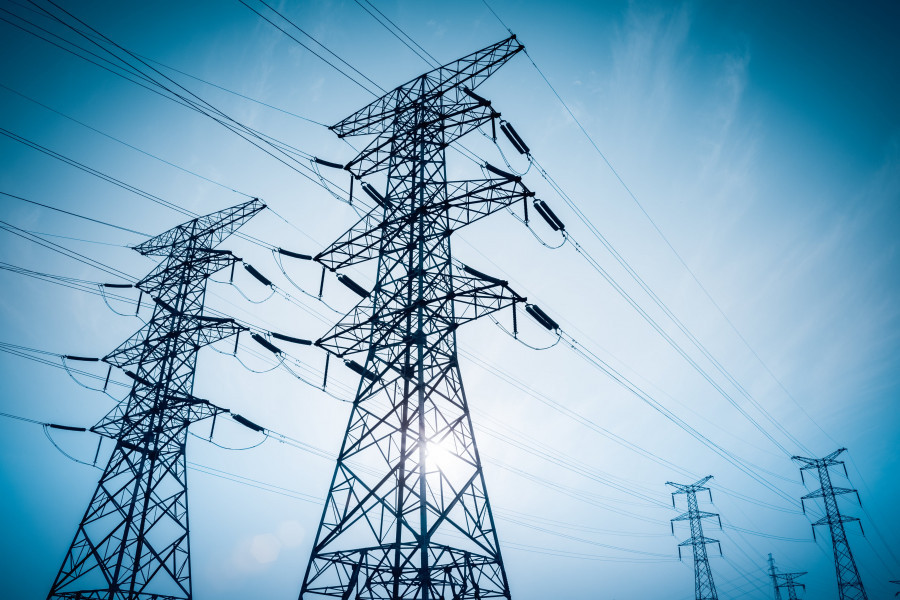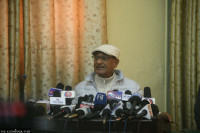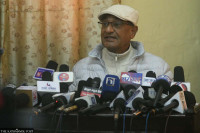National
Delhi opens door for Nepal to sell power in India’s energy exchange market
Several hundred megawatts of electricity in Nepal are being wasted amid low power demand in the country and lack of market access abroad.
Prithvi Man Shrestha
India, for the first time, has opened the door for Nepal to sell its electricity in India’s power exchange market after persistent lobbying from Kathmandu, as Nepal Electricity Authority is now in a position to sell its surplus energy.
The Ministry of Energy, Water Resources and Irrigation said in a statement that the Indian authority concerned—Central Electricity Authority—on Monday decided to allow Nepal to sell 39 MW of electricity produced by the 24MW Trishuli Hydropower Project and the 15MW Devighat Hydropower Project in the India Energy Exchange Limited (IEX), after receiving a nod from India’s Ministry of Power. Both projects were developed with the southern neighbour’s assistance.
Nepal has already received approval from India to purchase electricity from IEX. In April, India opened its power exchange market to Nepal only for selling electricity to Nepal.
“Following the Indian approval for Nepal to export its electricity, power trade between the two countries has entered a new phase,” the ministry of Energy, Water Resources and Irrigation said.
Gokarna Raj Pantha, joint spokesperson for the ministry, told the Post that the Nepal Electricity Authority would now be able to participate in an auction in IEX every day to sell power.
“The NEA will now participate in the auction at IEX from 10-12am every day in order to sell electricity,” the ministry said. As per the bilateral agreement, Nepal has appointed India’s NTPC Vidyut Vyapar Nigam Limited as its representative to participate in the bid.
According to Madhu Bhetuwal, spokesperson for the Energy Ministry, the Indian authority has also been studying Nepal’s proposal to sell the electricity generated by two other power projects, including the 456MW Upper Tamakoshi Hydropower Project.
About two months ago, the power utility had proposed that electricity generated by hydropower projects, including Upper Tamakoshi, Upper Bhotekoshi, Marshyangdi, Trishuli, and Devighat, whose combined generation capacity totals 621.1MW, be auctioned in India’s power exchange market. Nepali officials said that the Indian government’s permission to allow Nepal in the power exchange market has been a huge respite for the NEA, which is facing a wastage of power for more than two months.
Nepal became an energy surplus country ever since the 456MW Upper Tamakoshi Hydropower Project came into full operation in August.
According to the NEA, Nepal now has surplus power even during peak hours, usually between 7 and 8 pm. The peak hour demand stands at 1,500MW. The country is currently producing 2,000MW of electricity, of which 1,900MW is generated from hydropower projects.
Kulman Ghising, managing director of the authority, told the Post early last month that only 900MW-1,100MW was consumed during the night at low demand hours. In the daytime, 1,200MW to 1,300MW was consumed when the demand was the least.
The projects relying on small rivers and streams whose origins are not the Himalayas are currently not producing electricity in full capacity owing to the reduction in water levels after the end of the monsoon season, according to Suresh Bahadur Bhattarai, spokesperson for the NEA. With no avenue for export, some plants are cutting down on electricity generation, which experts say is a paradox for a country that suffered critical power outages until a few years ago.
Bhetuwal said Nepal was also exploring the options of selling electricity to India under a long-term power purchase agreement in the rainy season besides the current option of selling in India’s power exchange market.
“Energy banking mechanisms can be an answer to address the issue of long-term power trading,” he said. In December 2018, two countries had agreed to set up an energy banking system that will prevent the spilling of electricity generated in the country when production surpasses demand.
Energy banking involves exchanging electricity for electricity instead of cash. Under this mechanism, one country exports electricity to the other when it has a surplus, and imports back the same amount of energy when it has a deficit.
But there has not been much progress on the implementation of this practice despite Nepal raising this issue with India in bilateral forums, according to Nepali officials.
Even though India has now opened the door for Nepal to trade its electricity in India's exchange market, there are currently two separate electricity trading arrangements with India at small scales.
One is the power exchange mechanism with Bihar and Uttar Pradesh states of India. Under this mechanism, the two countries can buy power from each other as and when needed. The price has been fixed at INR6.18 per unit for trading [buying or selling] power through the 132kV transmission line and INR6.65 for trading through the 33kV transmission line.
“We buy power only during the winter and this mechanism has proved to be good for us as it is like taking power from a reservoir project,” Ghising had told the Post in early October. For reservoir type hydropower projects, the authority has approved a maximum price of Rs12.40 per unit.
According to Ghising, Nepal is currently selling 150MW to 200MW of electricity whenever the Indian side makes a request. Nepal has also been buying electricity from India under short-term power purchase agreements from Dhalkebar and Tanakpur regions. But officials say this mechanism is not enough for trading power on a large scale.
Nepali officials say that purchasing electricity from Nepal would be less expensive for India with power prices rising sharply due to coal shortages.
“We can offer a price in the range of INR5 per unit which will be less costly for India, and this will balance power prices there and boost the Indian economy,” Ghising had told the Post. “In fact, India purchasing Nepal’s power is a win-win situation for both countries.”
Power to be exported to India is clean energy which would contribute to India's own ambition of increasing its share of renewable energy substantially, according to Nepali officials. Indian Prime Minister Narendra Modi on Tuesday promised at the UN Climate Change Conference in Scotland that India would cut its emissions to net zero by 2070. Net zero, or becoming carbon neutral, means not adding to the amount of greenhouse gases in the atmosphere.
Meanwhile, Nepal is also taking measures to increase the domestic consumption of electricity. The Electricity Regulatory Commission reduced the electricity tariffs for households by 2.84 percent on average effective from November 17. According to the commission, the tariffs have been reduced by 40.69 percent for powering irrigation facilities.




 6.12°C Kathmandu
6.12°C Kathmandu













%20(1).jpg&w=300&height=200)

